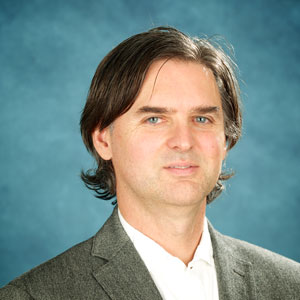Tyler Irving and Kevin Soobrian
May 30th, 2017
Two professors from The Edward S. Rogers Sr. Department of Electrical & Computer Engineering (ECE) are among the six U of T Engineering faculty members named for the inaugural Hart Teaching Innovation Professors. Enabled by a landmark $20 million bequest from the estate of alumnus Erwin Edward Hart (CivE 4T0), the professorships support innovation in engineering education, from technology enhanced active learning (TEAL) to Indigenous outreach.
“These professors are leaders in pedagogical practice and are driving our Faculty’s innovation in engineering education,” said Cristina Amon, Dean of the Faculty of Applied Science & Engineering. “Their creativity and dedication enrich the student experience and inspire the global engineering leaders of tomorrow.”
The new professorships complement the Percy Edward Hart and Erwin Edward Hart Professorships for early-career researchers, announced last fall. They are part of a rich suite of initiatives focused on enhancing engineering education across the Faculty and within the profession more broadly, including a recent workshop on educational technology and state-of-the-art learning facilities housed within the forthcoming Centre for Engineering Innovation & Entrepreneurship. Next month, U of T Engineering will host the annual conference of the Canadian Engineering Education Association, which brings together thought leaders in the field from across Canada and beyond.
The two Hart Teaching Innovation Professors from ECE are:

Micah Stickel (First Year Office, ECE) — Active teaching
Micah Stickel is the Chair, First Year Engineering and in 2014 was named one of the Top 20 under 40 by the American Society for Engineering Education. He is engaged in scholarly work to quantify the impact of new technologies in teaching, as well as active teaching modalities.
In contrast to a traditional lecture format, active teaching emphasizes collaborative work between students and faculty members, who act as facilitators. One example is the “flipped” or “inverted” classroom, where students are presented with new information ahead of class via online lectures or texts. Class time, instead, allows students to work together on problem sets or group projects related to the course material.
Research questions Stickel hopes to address include:
- How can active teaching techniques be used most effectively to help first-year engineering students develop engineering problem-solving competencies?
- What are the primary factors inhibiting engineering faculty members from using active teaching approaches, and how can a community of practice address these factors through training, mentorship and modelling?
His findings will lead to practical interventions that can enhance teaching practice not only within the Faculty, but within the broader profession.

Stephen Brown (ECE) — Active-learning in dynamic environments
Stephen Brown is a Professor with The Edward S. Rogers Sr. Department of Electrical & Computer Engineering. He has authored more than 100 scientific papers and co-authored three textbooks.
Brown is identifying opportunities to leverage modern technologies, such as networks and smartphones, to create active-learning environments for two new courses on machine learning and embedded systems. Examples of how these technologies can be applied include:
- Active use of live feedback through networks and smartphones to allow students to actively participate in lectures
- Embedded hardware at the lecture podium, including the use of video projection, to allow students to observe computer hardware operations during lectures
- Digitally combined lecture materials and live demos in a format that students can view from anywhere
See the complete list of Hart Teaching Innovation Professorships.
This story originally appeared on U of T Engineering News
More information:
Jessica MacInnis
Senior Communications Officer
The Edward S. Rogers Sr. Department of Electrical & Computer Engineering
416-978-7997; jessica.macinnis@utoronto.ca